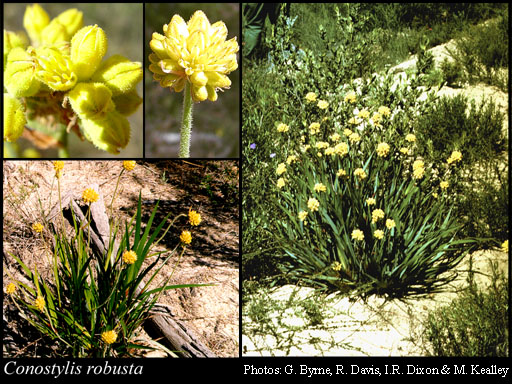- Reference
- Bot.Jahrb.Syst. 35:109-111 (1904)
- Conservation Code
- Not threatened
- Naturalised Status
- Native to Western Australia
- Name Status
- Current
Rhizomatous, tufted, stoloniferous perennial, grass-like or herb, 0.15-0.42 m high, to 0.6 m wide. Fl. yellow, Aug to Sep. White, grey or yellow sand.

Scientific Description
Leaves flat, 80-340 mm long, 2-12 mm wide; bristles or hairs on the leaf margin present, 1.5-3 mm long, with at least some small side branches at the base or simple, without any side branches, straight and rigid, angled towards the leaf apex; hairs on the surface of the leaf absent (leaf surfaces glabrous). Scape present, hairy, 165-410 mm long. Inflorescence subtended by a bract 10-30 mm long, with several flowers; floral bracts 5-10 mm long; pedicels present, 0.5-1 mm long; flowers 10-13 mm long. Perianth hairy, radially symmetrical, uniformly coloured, yellow, with six more or less equal tepals, the inner segments 5.5-7.5 mm long. Stamens six, in one level; filaments 0.5-1 mm long; anther 4.5-5 mm long, without an appendage. Style 7.5-9 mm long. Flowers in August or September. Occurs in the Geraldton Sandplains and Avon Wheatbelt IBRA bioregion(s), of the South-west Botanical Province.
Distribution
- IBRA Regions
- Avon Wheatbelt, Geraldton Sandplains.
- IBRA Subregions
- Geraldton Hills, Lesueur Sandplain, Merredin.
- Local Government Areas (LGAs)
- Greater Geraldton, Irwin, Mingenew, Northampton.